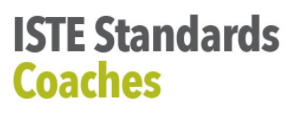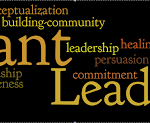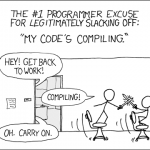
Content Knowledge and Professional Growth
Technology coaches demonstrate professional knowledge, skills, and dispositions in content, pedagogical, and technological areas, as well as adult learning and leadership and, are continuously deepening their knowledge and expertise. a. Content, Pedagogical, and Technical Knowledge: Engage in continual learning to deepen content and pedagogical knowledge in technology integration and current and emerging technologies necessary to effectively implement the Standards•S and Standards•T
a. Content, Pedagogical, and Technical Knowledge: Engage in continual learning to deepen content and pedagogical knowledge in technology integration and current and emerging technologies necessary to effectively implement the Standards•S and Standards•T
b. Professional Knowledge: Engage in continuous learning to deepen professional knowledge, skills, and dispositions in organizational change and leadership, project management, and adult learning to improve professional practice
c. Reflection: Regularly evaluate and reflect on their professional practice and dispositions to improve and strengthen their ability to effectively model and facilitate technology-enhanced learning experiences
Content Knowledge and Professional Growth Summary:
Content, Pedagogical, and Technical Knowledge: As one of my electives, I took a class on Instructional Strategies. There are different strategies that technology or instructional coaches understand work best in technology integration. Coaches are there to assist teachers, support them in using the technology and modeling change. As a form of professional development, it is personalized and transforms the learning environment to a collaborative model where they can exchange ideas, tips, and techniques, instead of working in isolation. As teacher’s skills develop and their needs change, the coach can change the professional development so that growth can continue. Best of all it models what students need to learn, collaboration skills and problem-solving. (See Post: The Essential Tool: Peer Coaches)
Professional Knowledge: As one of my electives, I took a class on Teaching with Technology. The course reviewed current and emerging educational technologies for use in instruction, assessment, and professional productivity. We worked with the ways that technology could be designed/developed to inspire student learning and creativity. Technology is not the focus of our teaching it supports the content and creates the opportunity to model digital citizenship and responsibility. We also looked at ways to grow professionally, to become leaders. For me, that is embodied in Servent Leadership. (See Post: Servant Leadership as a Coaching Model)
Reflection: Reflection has been a teaching strategy that I have used for many years. Students have reflected on their work, the problems they were having and the successes that they are able to achieve. These reflections have been the best formative assessments because not only can I see the misunderstandings but also what worked the best, I can also use it for evaluating my effectiveness. My questions are about what I could have done differently, or how could I clarify misunderstandings before they happened. Reflections are key when modeling the use of technology especially when the technology is my curriculum content.
Reflection on instruction as cyclical strategy allows for implementing changes to increase my student’s knowledge of my content. (See post: Achieving Better Instruction through Reflection)
Fulfilling the Content Knowledge and Professional Growth Standards
Through my position as the Computer Science Program Specialist for OSPI, I work to define the concepts and practices and provide instructional strategies to implement the standards of Computer Science. Through these, I am fulfilling the Content Knowledge and Professional Growth Standards.
Content, Pedagogical, and Technical Knowledge/Professional Knowledge:
Computer Science Standards
By December of 2016, I organized, and the led the work with teacher teams, administrators, program supervisors, and WA-STEM to evaluate and then finally adopt the Washington State Computer Science K-12 Learning Standards. The process required organizing the content knowledge and to reinforcing best practices in pedagogy. Emphasizing the knowledge of the concepts and also the computer science practices. Implementation will also require me to expand the knowledge of Computational thinking a foundation of computer science integration. There is growth in providing professional development around the content standards, but have much to learn.
http://k12.wa.us/ComputerScience/LearningStandards.aspx
Reflection:
Reflection is as important in my position at OSPI; I work to implement knowledge of the standards, and providing resources for the best practices of instructional strategies in Computer Science. Requiring feedback allows me to assess the understanding of concepts, practices, and pedagogy. The questions are written specifically so that a yes/no answer will not suffice. Additional feedback is used to improve and provide better support to the field.
Posts:

The Essential Tool: Peer Coaches
Peer Coaches know more than just instruction or technology, they understand classroom management, lesson planning and structure, instructional strategies and pedagogy, and formative and summative assessment.
read more
Servant Leadership as a Coaching Model
In trying to figure out who I could coach, especially in my position, our instructor suggested that at look at this from the lens of Servant Leadership. I have read about Servant Leadership in the past but needed to refresh my understanding.
read more
Achieving Better Instruction through Reflection
With each concept I teach, I evaluate the students understanding through their programming code, the required comments explaining the code, and the coding structure. I also know what they understand by listening to the questions that they ask. Formative assessment is the primary way that I evaluate if they understand the concepts, there is no need for a summative assessment if they are not ready. Reflection on instruction as cyclical strategy allows for implementing changes to increase my student’s knowledge of my content (Teach).
read more